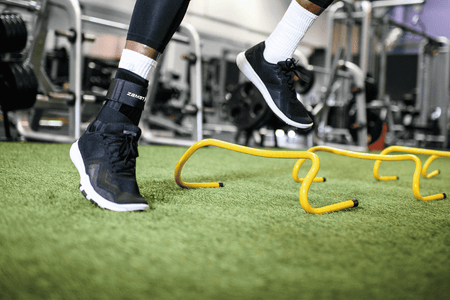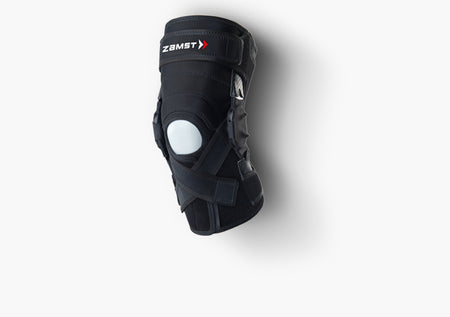
What is a general lower back injury?
A lower back injury refers to any damage or strain to the muscles, ligaments, discs, or vertebrae in the lumbar region of the spine. The spine is made up of 33 vertebrae’s including 7 in the neck (cervical), 12 in the upper to mid back (thoracic), 5 in the lower back (lumbar), 5 in the sacral region and 4 coccygeal vertebrae. The lower back is a dynamic region that can be injured in a variety of ways such as lifting something heavy, sudden movements of twisting, sitting incorrectly for prolonged periods of time or accidents. Common types of lower back injuries include muscle strains, ligament sprains, disc injury, and fractures.
1. Risks factors for a lower back injury can include:
Age: Older adults can be more prone to injury because of degeneration in the spine
2. Occupation: Jobs that involve heavy lifting, manual labor and prolonged sitting can cause pressure on the spine
3. Obesity: Excess body weight can increase stress on the lower back

Why does it happen?
Lower back injuries often occur due to overuse, improper lifting technique or sudden forceful movements that strain the lumbar region. In sports injuries, it is common in activities that require repetitive motions, heavy lifting, or high-impact actions. Also, lower back pain with running can occur because of the repetitive stress in the lumbar region.
Sports like weightlifting, gymnastics, and football often see injuries to the lower back due to intense strain placed on the lower back during heavy lifts in weightlifting, dynamic flips, twist, landing in gymnastics and tackling in football. Specific movements such as heavy lifting with improper form, sudden twisting, rotational or directional changes, and high impact landing can all play a role in stress to the lower back region.

What are the symptoms?
Lower back injury can occur at any time from sudden movements and forces or can be built up from prolonged inactivity or sitting for work too long. The main symptoms of a lower back injury can include some of the following:
1. Pain: Can range from sharp to dull ache that is localized in the lumbar region. Can be made worse with movements and inactivity.
2. Muscle spasms: When the low back muscles have been strained or disc have been injured the bodies defense mechanism is to contract in lower back muscles to protect. This is called a muscle spasm and can be very painful
3. Radiating pain: Pain can be local in the lower back but also can radiate down the legs in the front or more commonly the back. This is due to some nerve compression from a disc injury or narrowing of a canal where a nerve resides
4. Limited range of motion and stiffness: Reduced flexibility and difficulty in bending, twisting, and standing up straight can be signs of a lower back injury.
Often times these symptoms can vary in intensity and duration. If you are experiencing any of these symptoms checking with a healthcare professional can help.
How Long Does it Take to Heal?
Lower back injuries can be one of the most debilitating injuries of the body, but it often varies on healing time based on severity and mechanism of the injury. Minor muscle strains or sprain typically heal within a few days or weeks depending on measures taken to help the healing process. More severe injuries such as herniated discs, fractures, nerve impingement can take several weeks to months. In chronic lower back pain due to degeneration can take a lifetime and constant management of physical therapy, non-invasive treatment and last resort surgery.
Having a proactive approach of proper lifting techniques, back support, lower back brace, exercises for strengthening and mobility can help in the long run in reducing lower back injuries and timeline of healing.
TREATMENT
Treatment for lower back injury typically involves a combination of treatments to manage the pain. This is always dependent on severity and cause of the lower back pain.
1. Physical Therapy
When a person starts to experience lower back pain it is important for them to seek the guidance of a musculoskeletal expert such as a physical therapist. This way they can be fully access for the issue they are having. Typically, low back pain can be managed in up to 6 weeks of treatment. By focusing on exercises, manual therapy, and proper lifting techniques it can promote decrease in discomfort. If discomfort is not going away that’s when seeking another opinion for medical intervention would be key.

2. Medical Interventions
When lower back pain becomes severe or the injury does not respond to conservative treatment a medical doctor can intervene. Medications such as muscle relaxers or pain can be considered. They can provide a back stabilizer and a back brace for the lower back. Corticosteroid injections can help reduce inflammation and pain. Sometimes having someone get an injection can allow physical therapy intervention to have some success while inflammation is decreasing.


PT, DPT, MS
Evan Jeffries
EVAN JEFFRIES is a physical therapist with a Doctorate in Physical Therapy (DPT) from the University of St. Augustine for Health Sciences. He has vast knowledge of the musculoskeletal system and has treated many orthopedic conditions by bringing a proactive approach to healthcare and lifestyle.
Featured collection
Brace Finder
Looking for a brace that best suits you? Dive into the Brace Finder and find the best brace for your symptom.

 Canada
Canada China
China France
France Korea
Korea















